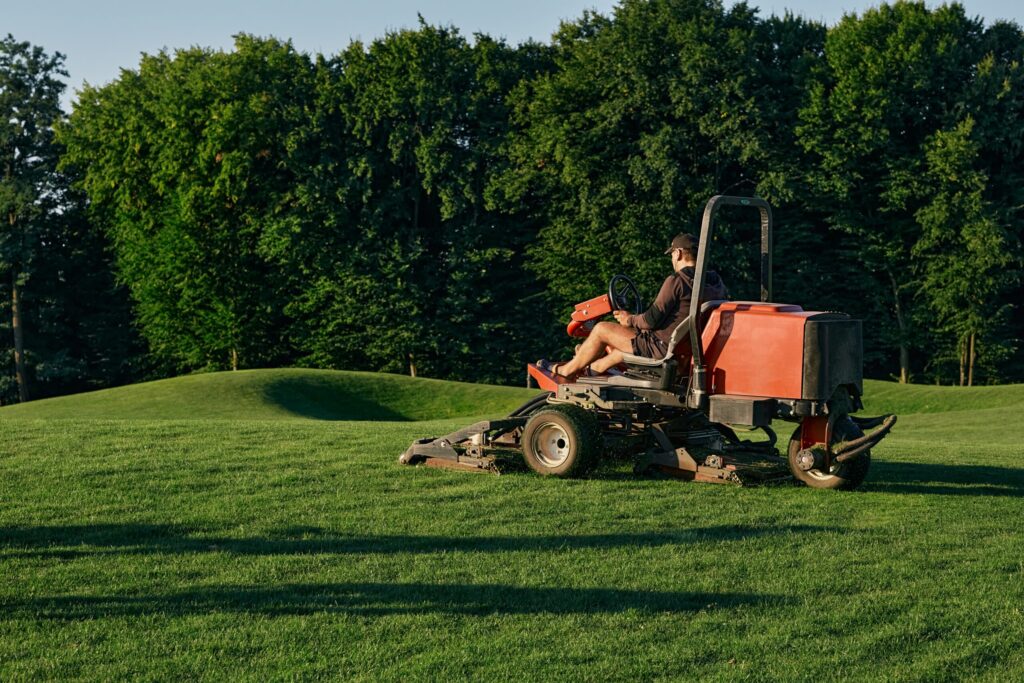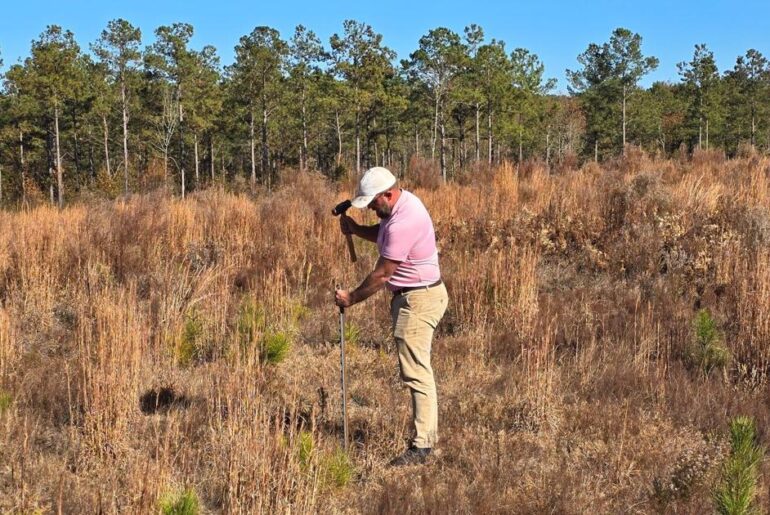Is the rise of pests and diseases on our golf courses an unwinnable war? As chemicals that routinely dealt with them are banned from use, and as changing weather patterns bring more pressure, it’s a perpetual battle for greenkeeping teams to keep our courses looking as best as they can.
For Your Course, produced by the British and International Golf Greenkeepers Association, we spoke to three course managers from across the UK to try and understand what they are facing on their tees, fairway and greens.
This week, we ask our trio whether they expect the problems of pests and diseases to get worse and what golfers need to understand about the issues.
Tackling those questions are Dan Kendle, Head Greenkeeper at Newquay, in Cornwall; Graham Ives, Course Manager at Waltham Windmill, in Lincolnshire; and Tim Johnson, Golf Course Superintendent at Dunham Forest in Cheshire.

Do you expect what you are seeing with pests and diseases to get worse?
Dan: Definitely. Dollar spot is moving up the country. It was more restricted to the South West but you’re hearing of it creeping up. It’s going to become a real problem.
I know there are a lot of people working on seed cultivars and other factors to help reduce it but, with the way the climate is going, I think it’s going to be a big problem in future years.
We are a resilient lot. We are resourceful and trying to come up with solutions to it.
Graham: I must be one of the lucky ones because I don’t really get dollar spot. I might get it on the odd tee. I’ve never seen it on a green here but I could probably say it is going to get worse before it gets better.
We need to lean more on cultural methods than chemical – because the more they keep going, the more they keep taking off us. With climate change, it is getting harder so we have to work harder.
Tim: Yes, but as I’ve said, I don’t think disease is our biggest headache. It’s leatherjackets and it’s worms in autumn. People forget about worms but watch social media from the end of August onwards. It kicks off about worms.
Can you predict a pest or disease problem?
Graham: I believe it’s a feeling about what the plant needs and when it needs it. I think all good greenkeepers will tell you it is a feel and they know what that grass wants.
You can predict what you need to do because of the forecasts. I know a lot of good greenkeepers who’ll all say the same. It is a gut instinct. I don’t know whether that’s inbred into us but it’s there.
Dan: We used the Smith-Kerns model [for dollar spot]. It uses a five-day average of humidity and air temperature to create a percentage of risk and if it’s two or three days of 20% and above you are likely to see it. We were seeing 40% last summer, which is just crazy.
When I see it, I put a preventative fungicide down. I was on holiday a few weeks ago and I could see during the time I was going to be away the percentage risk was up. So I put a preventative down, just so I could go on holiday and relax. That’s how much it gets to you.

What do golfers need to understand about what you’re dealing with?
Tim: It’s the why, not the how. Why are we suddenly getting problems with leatherjackets? I don’t think golfers need to know how we fix things. It’s easy for us to blame the weather. I think when we say, ‘we’ve lost this product and we can’t use that anymore’, it comes across like we’re just fobbing people off.
To a certain extent, I can understand why people would think that. But I don’t think enough emphasis is being put on what products we’ve lost and what we can’t do anymore. There’s a lack of resources. We’re relying on black PVC sheeting to get leatherjackets out of greens. That says it all.
But members have to justify spending £150 a month on membership. They want it to be right, and want it to be good, otherwise they’re not getting value for money. That’s why you get, ‘we’re paying all this money and this is what we’re putting on’. It’s a two-way street. It’s a bit more communication, so golfers can understand what we’ve lost.
Graham: I think it’s the minority that don’t understand. I think the majority do. I play at two different courses, the one I work at and I’m a member of another, and the lads I play with all understand. They do know.
The minority are never going to change and you’re never going to change the way they think. But I do believe the majority of golfers know and understand what we do.
Dan: I think it’s a case of understanding, asking the questions and taking that information on board. There is no greenkeeper that is going to give a member or golfer information that’s incorrect.
We brought an agronomist in because we were coming up against a lot of resistance – particularly through dollar spot and leatherjackets – but there are a lot of things that are now out of our control.
We don’t have the chemicals and they aren’t what they used to be. The percentage of active ingredient and the efficacy has been reduced so much they’re just not as good as they were 15 to 20 years ago. That’s having an impact.
This article appears in Your Course, the twice-yearly publication from the British and International Golf Greenkeepers Association. Your Course invites golfers to gain a deeper appreciation of what preparing and maintaining a golf course really involves. Head to www.bigga.org.uk to find out more.
Now have your say on pests and diseases
What pests and disease issues have you seen on your golf course? Let us know by leaving a comment below or on X.







